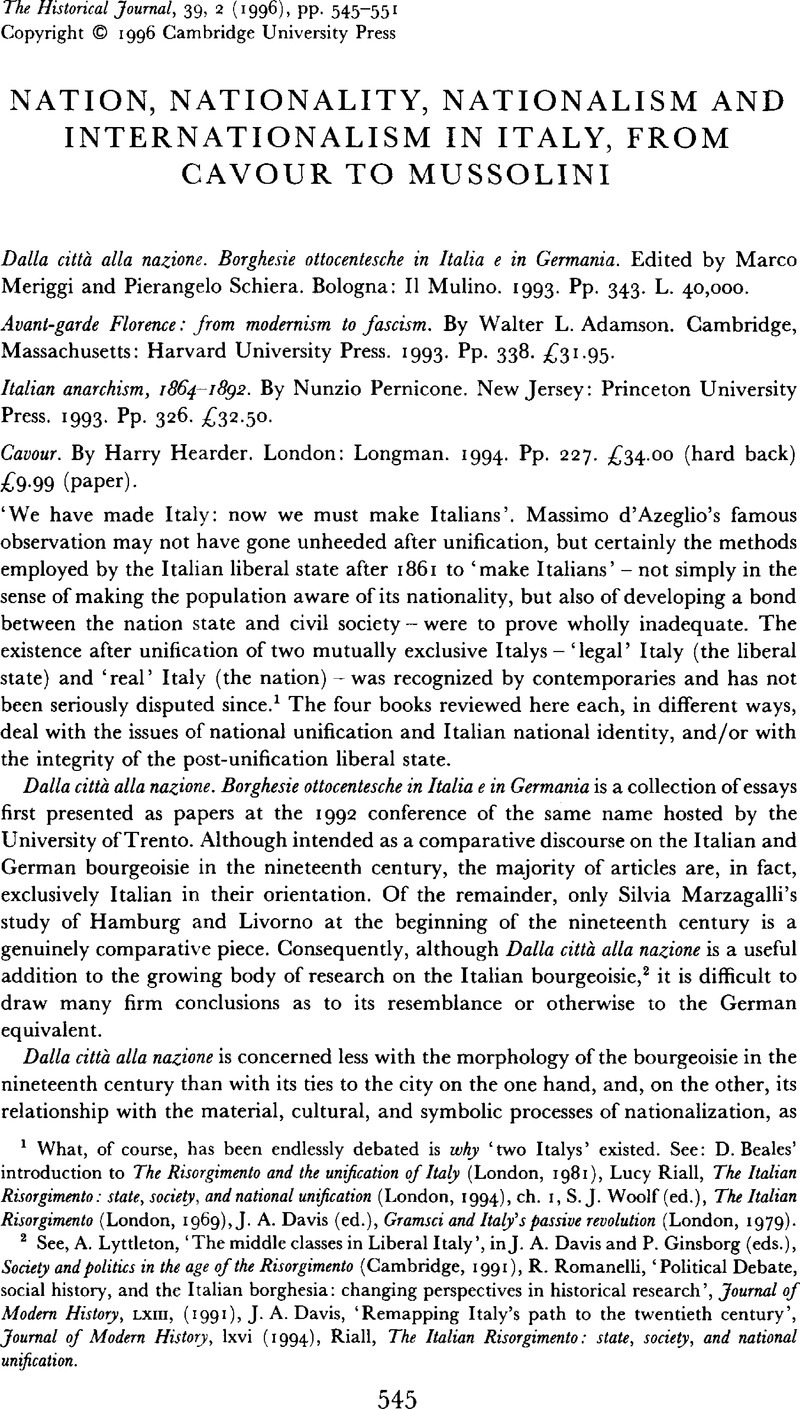Article contents
Nation, nationality, nationalism and internationalism in Italy, from Cavour to Mussolini
Published online by Cambridge University Press: 11 February 2009
Abstract

- Type
- Review Articles
- Information
- Copyright
- Copyright © Cambridge University Press 1996
References
1 What, of course, has been endlessly debated is why ‘two Italys’ existed. See: D., Beales' introduction to The Risorgimento and the unification of Italy (London, 1981)Google Scholar, Lucy, Riall, The Italian Risorgimento: state, society, and national unification (London, 1994), ch. IGoogle Scholar, Woolf, S. J. (ed.), The Italian Risorgimento (London, 1969)Google Scholar, Davis, J. A. (ed.), Gramsci and Italy's passive revolution (London, 1979).Google Scholar
2 See, Lyttleton, A, ‘The middle classes in Liberal Italy’, in Davis, J. A. and Ginsborg, P (eds.), Society and politics in the age of the Risorgimento (Cambridge, 1991)Google Scholar, Romanelli, R, ‘Political Debate, social history, and the Italian borghesia: changing perspectives in historical research’, Journal of Modern History, LXIII, (1991)Google Scholar, Davis, J. A., ‘Remapping Italy's path to the twentieth century’, Journal of Modern History, lxvi (1994)Google Scholar, Riall, , The Italian Risorgimento: state, society, and national unification.Google Scholar
3 Cafiero, quoted in Walter, N, ‘Carlo Cafiero on action and communism’, The Raven, VI, (1988), p. 181.Google Scholar
4 See, in particular, D. Mack, Smith, Cavour (London, 1985).Google Scholar
5 D. Mack, Smith, Victor Emanuel, Cavour, and the Risorgimento (London, 1971), pp. 62–4.Google Scholar
6 D. Mack, Smith, Cavour and Garibaldi 1860. A study in political conflict (Cambridge, 1985 edn), p. xiii.Google Scholar
7 McMillan, J. F., Napoleon III (London, 1991), p. 84Google Scholar. This is also part of the Longman, Profiles in power series.Google Scholar
- 4
- Cited by


